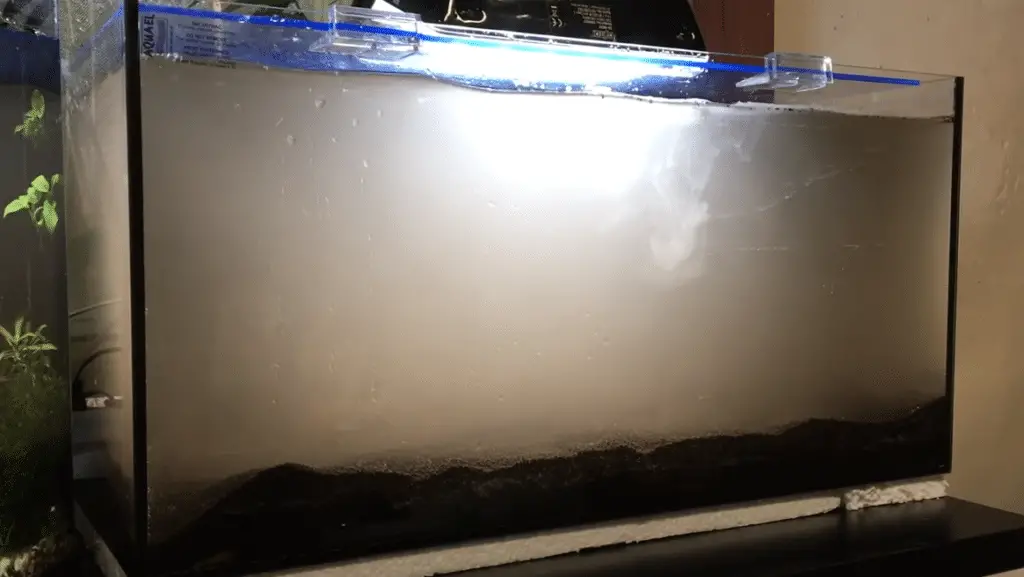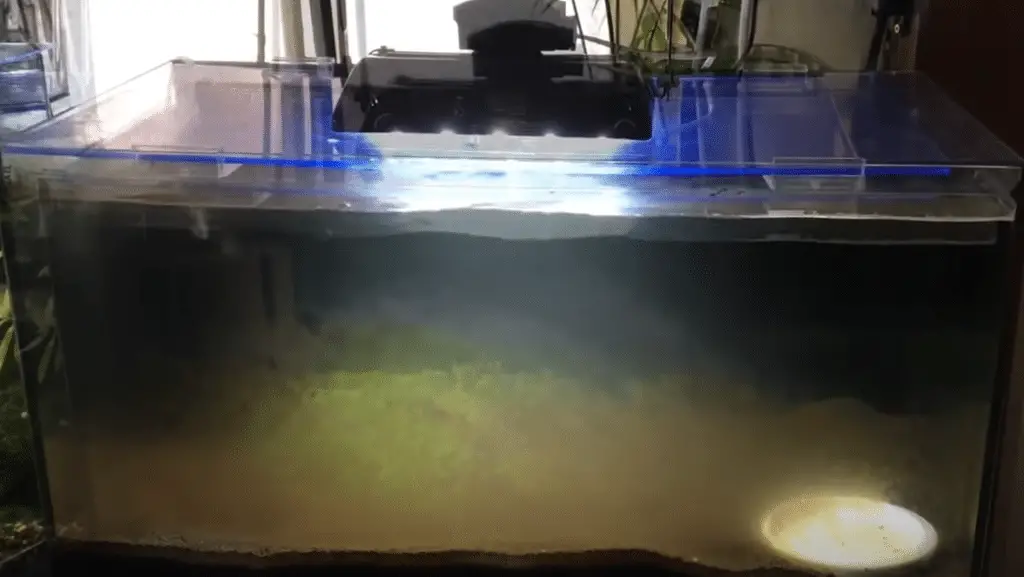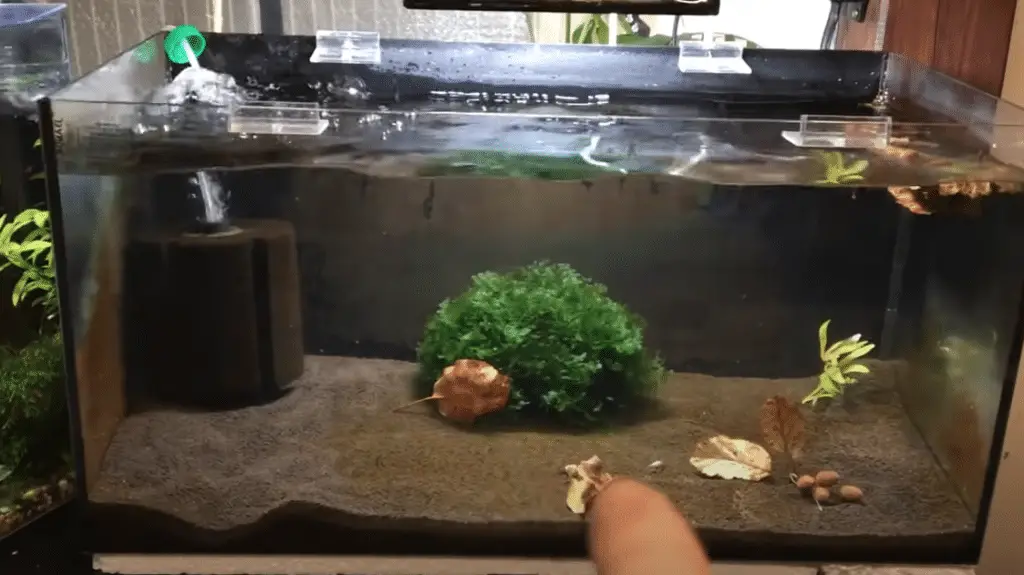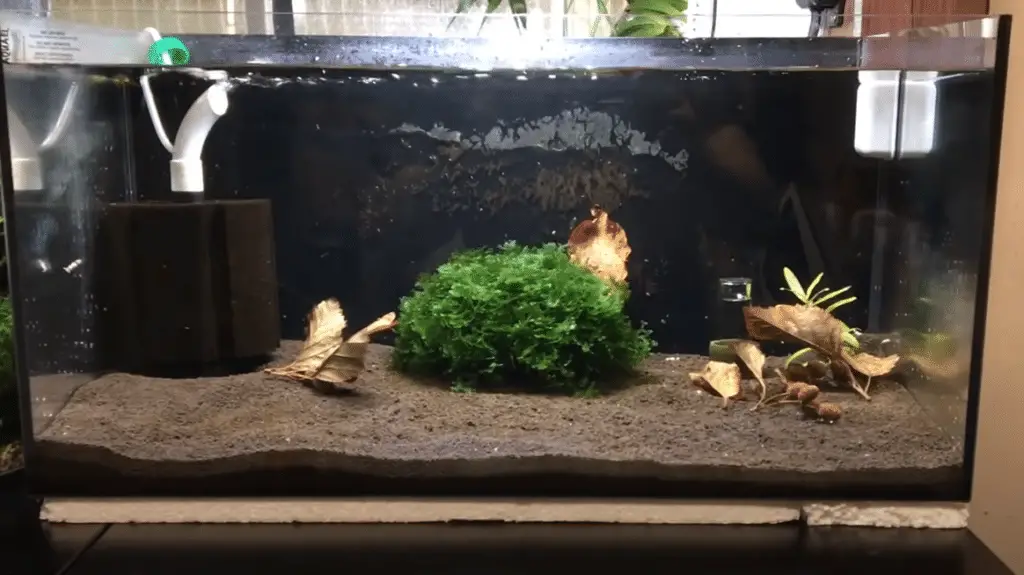I. Introduction To ADA Amazonia
If you’re looking to cycle a new aquarium, using ADA Amazonia soil can be an effective method. This substrate is known for providing nutrients for plant growth and aiding in the establishment of beneficial bacteria that help maintain a healthy environment for aquatic life.
In this comprehensive blog post, we’ll guide you through the process of cycling your tank with ADA Amazonia soil, from preparation to maintenance. By following these steps, you can establish a thriving and healthy aquarium for your aquatic pets.
II. Preparing The Aquarium
Before starting the cycling process, it’s important to prepare your aquarium and gather all the necessary equipment.
The first step is to choose the right size aquarium for your needs. Consider the type of fish or other aquatic animals you want to keep, as well as the available space in your home. Once you’ve selected an aquarium, you’ll need to gather the necessary equipment, such as a heater, filter, lighting, and water conditioner. It’s important to choose equipment that is appropriate for the size of your tank.
Setting up the tank with ADA Amazonia soil
Next, you’ll need to set up the tank with ADA Amazonia soil. Then, add a layer of soil to the bottom of the tank, making sure it’s level and covers the entire surface.
Filling the tank with water
Once the soil is in place, you can fill the tank with water. It’s important to use dechlorinated water, as chlorine can harm beneficial bacteria. You can use a water conditioner to remove chlorine and other harmful chemicals from tap water.
List of equipment necessary for cycling a tank with ADA Amazonia soil
- Aquarium tank
- ADA Amazonia soil
- Heater (If Needed)
- Filter
- Test kits
- Lighting
- Water conditioner

- Plants (optional)
By following these steps and using the necessary equipment, you can prepare your aquarium for the cycling process and ensure a healthy environment for your aquatic pets.

III. The Nitrogen Cycle
The nitrogen cycle is a crucial process in any aquarium that involves the breakdown of harmful waste products, such as ammonia and nitrite, into less harmful compounds. Here’s a breakdown of how the nitrogen cycle works:
Explanation of the nitrogen cycle
The nitrogen cycle is a natural process that occurs in every aquarium. It starts with fish waste, uneaten food, and other organic matter that produces ammonia.
Ammonia is highly toxic to fish and other aquatic animals. However, beneficial bacteria, known as nitrifying bacteria, convert ammonia into nitrite, which is also harmful but less toxic than ammonia.
Finally, another group of beneficial bacteria, known as nitrite oxidizing bacteria, convert nitrite into nitrate, which is much less toxic than both ammonia and nitrite. Nitrate can then be removed from the aquarium through regular water changes or by using plants.
The role of beneficial bacteria in the cycle
Beneficial bacteria play a crucial role in the nitrogen cycle. They help to convert harmful compounds into less toxic compounds that can be removed from the aquarium. These bacteria are found naturally in aquariums, but they need time to establish themselves. Cycling the tank with ADA Amazonia soil helps to establish beneficial bacteria quickly.
How the cycling process works
The cycling process involves establishing a colony of beneficial bacteria in the aquarium. The process can take anywhere from a few weeks to a few months, depending on various factors such as the size of the aquarium.
During the cycling process, ammonia and nitrite levels will rise, and it’s essential to test the water regularly to monitor these levels. Once the beneficial bacteria have established themselves, ammonia and nitrite levels will begin to decrease, and nitrate levels will increase. This is a sign that the tank is fully cycled and ready for aquatic life.
Understanding the nitrogen cycle and the role of beneficial bacteria is crucial for maintaining a healthy and thriving aquarium. By cycling the tank with ADA Amazonia soil, you can establish beneficial bacteria quickly and ensure a healthy environment.

IV. Cycling The Tank And Adding Plants
Cycling a tank with ADA Amazonia soil requires the establishment of beneficial bacteria to break down harmful waste products. Here’s what you need to know about cycling the tank and adding plants:
- Using beneficial bacteria to jumpstart the cycling process: . One way to jumpstart the cycling process is to use beneficial bacteria supplements, such as Seachem Stability or Tetra SafeStart. These products contain live bacteria that can help to establish the nitrogen cycle quickly. Be sure to follow the instructions carefully and continue testing the water regularly to monitor the cycling process.
- The importance of patience during cycling: Cycling a tank with ADA Amazonia soil can take time, and it’s important to be patient during the process. It can take anywhere from a few weeks to a few months for beneficial bacteria to establish themselves fully. Testing the water regularly and monitoring ammonia and nitrite levels can help to ensure that the process is progressing as it should.
- Adding plants to the tank to assist with the process: . Plants absorb ammonia and other waste products as part of their natural growth process. Adding plants also helps to establish a healthy balance in the aquarium and can reduce the need for frequent water changes. Some good plant choices for a cycling aquarium include Java Moss
 , Java Fern, and Anubias.
, Java Fern, and Anubias. - List of beneficial bacteria supplements that can be used to help jumpstart the cycling process:
- Seachem Stability
- Tetra SafeStart
- API Quick Start

- Fluval Biological Enhancer
By using beneficial bacteria supplements, being patient during the cycling process, and adding live plants to the aquarium, you can establish the nitrogen cycle in your tank and ensure a healthy environment for your aquatic pets.

V. Testing For Ammonia
Testing the water regularly is an essential part of the cycling process. Here’s what you need to know about testing for ammonia:
- Regular water testing during the cycling process: Ammonia and nitrite levels will rise during the cycling process, and it’s essential to monitor these levels to ensure that they are not harmful to your aquatic pets. Testing the water also helps to ensure that the cycling process is progressing as it should.
- Recommended test kits and parameters to monitor: There are various test kits available for monitoring water parameters, including ammonia, nitrite, nitrate, pH, and more. It’s important to choose a reliable test kit that provides accurate readings. Some popular test kits include the API Master Test Kit and the Seachem MultiTest Kit. You should monitor ammonia and nitrite levels closely during the cycling process. Ammonia and nitrite levels should be kept below 0.25 ppm, while nitrate levels should be kept below 20 ppm.
- Interpreting test results and knowing when the tank is fully cycled: During the cycling process, ammonia and nitrite levels will rise, while nitrate levels will increase as the cycle progresses. When ammonia and nitrite levels drop to zero, and nitrate levels are present, the tank is fully cycled and ready for aquatic life.
- Here is a table of water parameters to monitor during the cycling process:
| Water Parameter | Acceptable Range |
|---|---|
| Ammonia | < 0.25 ppm (close to zero) |
| Nitrite | < 0.25 ppm |
| Nitrate | < 20 ppm |
| pH | 5.5 – 6.5 |
By testing the water regularly and monitoring ammonia, nitrite, and nitrate levels, you can ensure that the cycling process is progressing as it should and create a healthy environment for your aquatic pets.

VI. Maintaining the Cycle
Maintaining the nitrogen cycle in your aquarium is crucial. Here’s what you need to know about maintaining the cycle:
- Once the tank is fully cycled, it’s important to continue maintaining the cycle to ensure that beneficial bacteria thrive and harmful waste products are broken down. This includes regular water changes and ghost feeding or adding ammonia if needed.
- Regular water changes are essential for maintaining the nitrogen cycle in your aquarium. They help to remove excess waste products, such as nitrate, and replenish the tank with fresh, dechlorinated water. It’s important to monitor water parameters regularly and adjust water changes accordingly.
- Here is a table of recommended water change
 frequency based on tank size:
frequency based on tank size:
| Tank Size | Water Change Frequency |
|---|---|
| 10 gallons | 10-25% every 1-2 weeks |
| 20 gallons | 10-25% every 1-2 weeks |
| 30 gallons | 10-25% every 1-2 weeks |
| 40 gallons | 20-25% every 1-2 weeks |
| 50 gallons | 20-25% every 1-2 weeks |
| 75 gallons | 20-25% every 1-2 weeks |
By maintaining the cycle through regular water changes, monitoring water parameters, and maintaining a healthy balance in the tank, you can ensure a healthy and thriving environment.

VII. Benefits of Using ADA Amazonia Substrate In a Fish Tank
Using ADA Amazonia substrate in your fish and shrimp tank can provide several benefits, including:
- Provides nutrients for plant growth: ADA Amazonia substrate contains essential nutrients that help to promote plant growth. This can help to create a natural and beautiful aquatic environment for your fish and shrimp.
- Aids in the establishment of beneficial bacteria: The porous nature of ADA Amazonia substrate allows for the establishment of beneficial bacteria, which are essential for maintaining the nitrogen cycle in your aquarium.
- Lowers the pH of the water: ADA Amazonia substrate has a natural buffering capacity, which can help to lower the pH of the water in your aquarium. This is beneficial for many fish and shrimp species that prefer slightly acidic water.
- Reduces the need for frequent water changes: ADA Amazonia substrate helps to remove harmful waste products from the water, reducing the need for frequent water changes. This can save time and make maintaining your aquarium easier.
Using ADA Amazonia substrate in your fish and shrimp tank can provide several benefits, making it a popular choice among aquarium enthusiasts

VIII. How long does ADA Aqua soil last
The lifespan of ADA Aqua soil can vary depending on several factors, including the size of your tank, the number of plants, and the amount of light and CO2 injected into the tank. Generally, ADA Aqua soil can last for several years with proper maintenance.
To extend the lifespan of your ADA Aqua soil, it’s essential to maintain a healthy balance in your aquarium. This includes monitoring water parameters regularly, making regular water changes, and avoiding overstocking your tank.
Over time, ADA Aqua soil may lose its ability to buffer the water and maintain a low pH level, which is essential for a low pH shrimp tank setup. To determine when it’s time to replace your ADA Aqua soil, you can perform a simple test.
Take a small sample of water and test the pH level of the water using a pH testing kit. If the pH level is 6.8 or above, it’s recommended to replace the soil to maintain a healthy environment for your aquatic pets.
In summary, the lifespan of ADA Aqua soil can vary depending on several factors, but with proper maintenance, it can last for several years. To extend its lifespan, maintain a healthy balance in your tank and monitor the pH level of the water regularly.
IX. Conclusion
Creating a healthy environment for your fish and shrimp requires establishing the nitrogen cycle in your aquarium. By following these key steps, you can establish the cycle in your tank using ADA Amazonia soil:
- Choosing the right aquarium and equipment
- Setting up the tank with ADA Amazonia soil
- Filling the tank with water
- Using beneficial bacteria to jumpstart the cycling process
- Adding plants to the tank to assist with the process
- Regular water testing during the cycling process
- Post-cycling maintenance to ensure the cycle continues
Be patient during the cycling process, which typically takes between 2 and 3 months to complete. Remember to monitor water parameters regularly, maintain a healthy balance in the tank, and make regular water changes.
Cycling a tank with ADA Amazonia soil is a rewarding process that requires patience, attention to detail, and a love for aquatic life. With the right equipment, knowledge, and care, you can create a beautiful and healthy aquatic environment for your fish and shrimp to thrive in.

IX. Frequently Asked Questions
Q: Does Ada Amazonia leach ammonia? A: Yes, ADA Amazonia soil can leach ammonia during the initial cycling process. However, this is a natural part of the cycling process and can be managed through regular water testing and water changes.
Q: What is the difference between ADA Amazonia and v2? A: ADA Amazonia is designed for aquariums with low to medium light and CO2 injection, while ADA Amazonia v2 is designed for aquariums with high light and CO2 injection.
Q: How do you use ADA Amazonia soil? A: ADA Amazonia soil should be placed at the bottom of the aquarium, followed by a layer of sand or gravel. The tank should be filled slowly to avoid disturbing the soil.
Q: Does Amazonia soil lower pH? A: Yes, ADA Amazonia soil has a natural buffering capacity that can help to lower the pH of the water in your aquarium.
Q: Does ADA soil lower pH? A: Yes, ADA soil can lower the pH of the water in your aquarium due to its natural buffering capacity.
Q: Do fish like heavily planted tanks? A: Many fish species thrive in heavily planted tanks, as the plants provide shelter, hiding places, and a natural environment.
Q: Is aqua soil better than gravel? A: ADA Aqua soil is better than gravel for planted tanks, as it provides essential nutrients for plant growth and aids in the establishment of beneficial bacteria.
Q: Do I need to wash aqua soil before putting in tank? A: Yes, it’s recommended to rinse ADA Aqua soil thoroughly before adding it to your aquarium to remove excess dust and debris.
Q: What is the pH of ADA Amazonia soil? A: The pH of ADA Amazonia soil is typically between 6.0 and 6.5.
Q: How long does ADA soil take to cycle? A: ADA soil can take several weeks to several months to cycle fully, depending on the size of the tank and the number of fish and plants.
Q: Does aquasoil create ammonia? A: Yes, ADA Aqua soil can create ammonia during the initial cycling process, but this is a natural part of the process and can be managed through regular water testing and water changes.
Q: Is Amazon soil good for aquarium? A: Yes, ADA Amazonia soil is an excellent substrate for planted aquariums, as it provides essential nutrients for plant growth and aids in the establishment of beneficial bacteria.
Q: How much ADA soil do I need? A: The amount of ADA soil you need depends on the size of your aquarium. As a general rule, you should aim for a substrate depth of 2-3 inches.
Q: What is Ada Amazonia made of? A: ADA Amazonia soil is made from natural volcanic soil and is rich in essential nutrients for plant growth.
